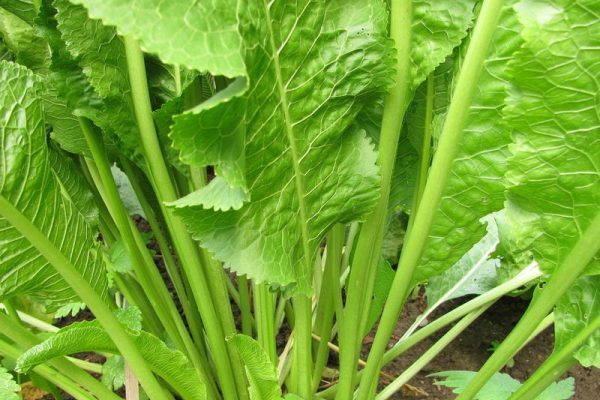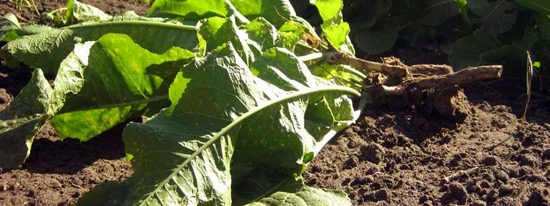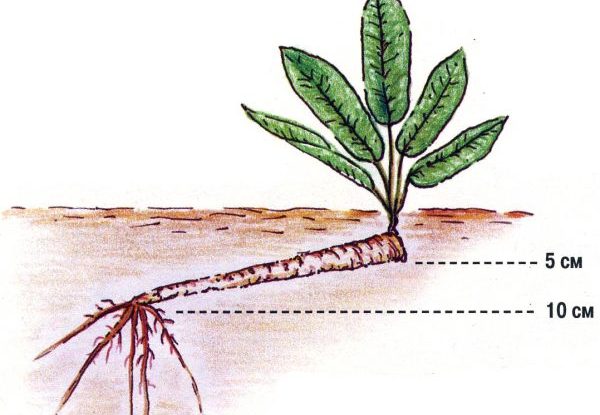How to get rid of horseradish in the garden forever?
Content
Ways to deal with horseradish
Conventionally, methods of dealing with this plant in the garden are divided into three types: the use of herbicides, mechanical removal, displacement by other plants. Alone, they are ineffective, so it is important to combine them with each other. For example, treat with chemicals and prune the rhizome. An integrated approach will increase the chances of a successful endeavor!
An effective method for eradicating horseradish is herbicides. These are special chemicals that are used to kill plants. Herbicides are divided into:
- substances of continuous action that kill plants indiscriminately;
- selective substances affecting plants of a certain type.
It is safer to use continuous herbicides, but this must be done carefully so as not to lose all the vegetation on the site at once.
- Tornado is one of the most effective herbicides. The substance enters the plant through the leaves, and then descends to the roots, where it destroys the usurpers of your land.
- "Hurricane" is a non-selective herbicide of systemic action, which is used after the emergence of vegetation. The substance is absorbed into the roots, and begins to act after 5 days.
- Roundup is distinguished by its efficiency and overall environmental friendliness. The drug is devoid of activity in the soil, after removing horseradish or other weeds, immediately sow a new crop.
Successful action of herbicides in the case of horseradish requires a little dexterity and patience. You will need a 10-20 ml medical syringe and a fine needle. Cut off the aerial part of the plant by opening the root, then make holes in it with a knitting needle. The more holes you make, the better. Then draw the undiluted drug into the syringe, inject it into the holes. The main goal is to inject the herbicide as deep into the root as possible. This is only a declaration of war, repeat the procedure within a week, since horseradish has a developed root system and can easily grow again.
Another enemy of horseradish is saltpeter. This fertilizer can be used successfully against overgrown weeds. All summer, until the first frost, water the horseradish leaves with nitrate. Fertilizer constantly stimulates the growth of the plant, so that it will not have time to prepare for winter “hibernation”. As a result, it will freeze.
Another way is to use ammonium nitrate. You will need to cut off the leaves, expose the root, and then firmly fasten the plastic tubes on the formed “posts”. Pour ammonium nitrate into them and add a little water. After the tubes are blocked, cover the beds with earth again. Ammonia will quickly destroy the root and free up space in the garden.It is best to combine herbicides with saltpeter to increase the chances of success.
Video "Practical Tips"
Demonstration video with practical recommendations for removing horseradish from the garden.
Folk remedies
A successful fight is possible with the help of folk remedies.Arm yourself with salt, sprinkle abundantly on the beds and plant roots. Acidic soil adversely affects the growth and rooting of horseradish. Be careful - salting the ground will damage the surrounding seedlings. The obvious disadvantage of using salt is that the method is unreliable, requiring repeated repetition.
The next way is to enclose the plant. Even if horseradish is already growing in your garden, isolate it from the rest of the plantings with wooden walls, digging them in at a depth of at least 40 cm. The occupation is laborious, but it will help you keep the growth of roots underground. After all, it is much more convenient to deal with long-lived plants when they are concentrated in one place.
Tip for the future: When processing or digging up horseradish, do not mix it with compost. Better to take the leftovers away from the beds or use a trash can.
How to cut horseradish correctly
Mechanical removal of the plant's rhizome requires caution and patience. You will need a shovel and special pitchfork. Digging up the ground or mindlessly wielding a hoe does not make any sense, so you will only help the horseradish spread.
The first option for digging is that, having loosened the earth in the garden, you have to find and select all the small roots. Note that you have to dig out the breast to a depth of 30-40 cm, and in no way less than 50-60 cm wide. Try not to crush the root, so as not to stimulate it to release even more lateral roots. Carefully sort through the soil, selecting all the processes.
The second option will keep you busy for a whole season. You will need a pitchfork to dig up the earth. The mechanism of action is the same - having loosened the ground with a pitchfork, you have to choose the roots. The main thing is not to damage the rhizome and try to remove as many shoots as possible in order to clear a few more beds in the garden.
Fighting with other plants
How to remove horseradish using other plants? In fact, it is quite difficult due to the increased resistance to external influences. After herbicide treatment and digging up the beds, sow zucchini or any pumpkin seeds. They are best suited for weed control. The obvious disadvantage of this method of struggle is that the horseradish roots remaining in the ground will germinate, overtake other plants in growth, and then survive from the garden.
Arrange a lawn of perennial grasses at the planting site. They will successfully cope with horseradish attempts to germinate in the spring. Combine the herbs with enclosing the beds with wooden walls or a barrel to keep them from overgrowing.
You should not allow the neighborhood of horseradish and potatoes in the garden. Potatoes, at first, will stop the growth of horseradish, but later will serve as fertilizer for it. To successfully combat horseradish in the garden, use several methods at the same time. Remember - this war is not easy.
Video "Ways to fight"
Informational video with ways to fight horseradish.





